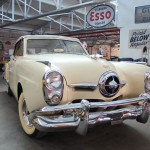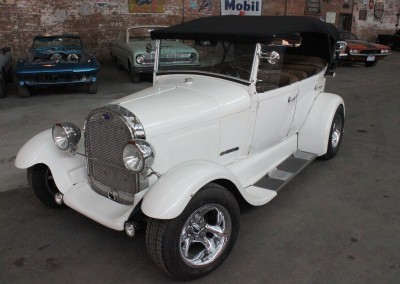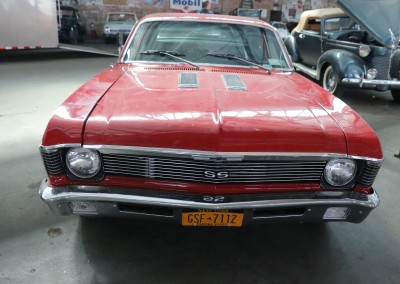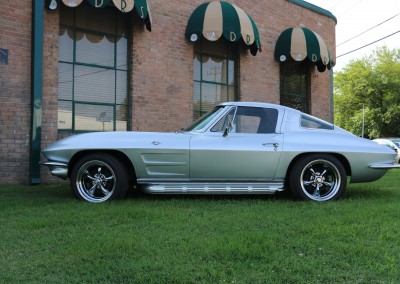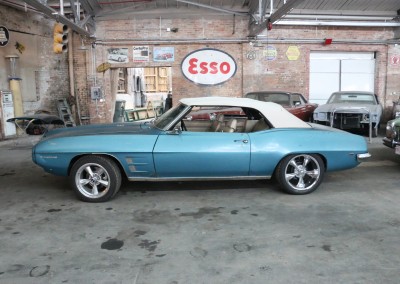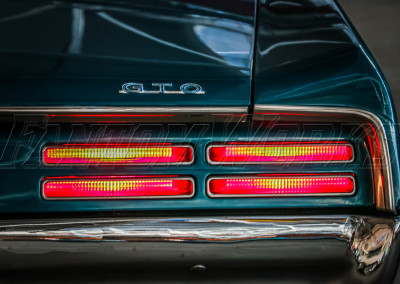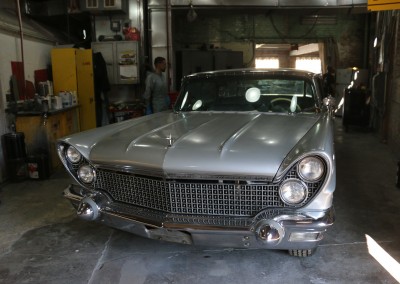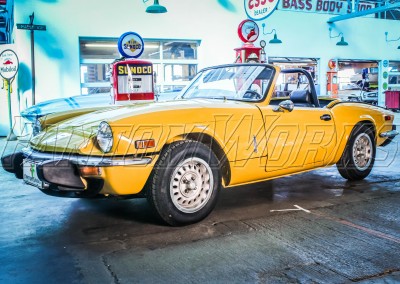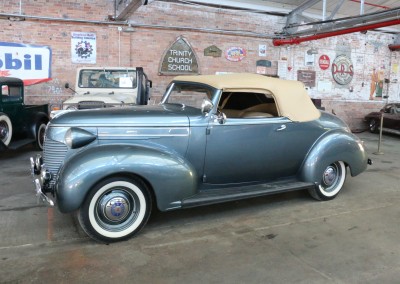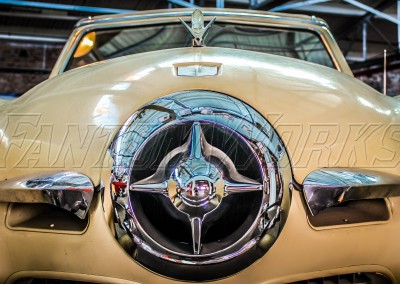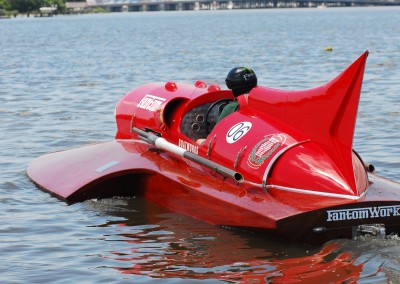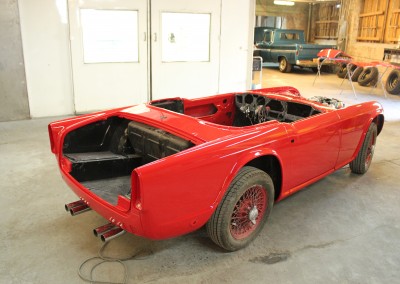1950 Studebaker Commander

As seen on Season Three of FantomWorks
Owner Insight:
My Uncle, Dr. Samuel Taylor purchased the car from the Studebaker museum in the early 80s with only 4000 miles on it. He had many classic cars in his collection however this is the one I remember riding in most often. Velvet (my wife) and our kids spent many afternoons riding through the back roads around Pickwick Dam, TN exploring and enjoying the ride with the top down. And the top was always down. Even if it rained. I’m not sure everyone in the back seat enjoyed those brief summer showers. On our last trip out in Tennessee (late 1980s) the head gasket let go and the car was garaged and covered. It didn’t move for almost 20 years.
When my Uncle passed away in 2010 I brought the car home to Virginia. It’s a special car that has provided great memories for our family. I started the restoration but quickly realized I wouldn’t have time to finish it properly. Velvet suggested I take the car to FantomWorks. Special thanks to Dan and his crew for bringing our Studebaker back to life.
–Travis T.
Explore the Project Galleries
Arrival
Mechanical
Detail & Trim
Finish
Public reaction is what matters in the auto industry, and “The Next Look” 1950 Studebaker, featuring the company’s signature “bullet-nose” look for the first time, was a winner — more popular than even the 1947. Sales began in August 1949, nearly a month ahead of other 1950 cars.
For all this hoopla, the 1950s were identical to the 1947-49 models except for the bullet nose, minor trim, and vertical instead of horizontal taillights. However, the new front end added an inch to wheelbases, taking Champions to 113, Commanders to 120. Both lines again offered two- and four-door sedans, a convertible, and a five-passenger Starlight coupe with its distinctive panoramic rear window.
All models continued on 15-inch wheels, but Commanders were heavier, so they came with 7.60 tires on six-inch-wide rims versus 6.40s on five-inch-wide wheels. Commanders also had 11-inch cast-iron brake drums, while Champions used nine-inch drums.
Champion also listed a three-passenger business coupe. Commanders again included a top-line Land Cruiser sedan, now on a 124-inch wheelbase, with extra rear-seat legroom and rear-door vent windows.
All 1950 Studebakers boasted a new double-A-arm front suspension, with Champions featuring tubular shocks mounted inside new “long-travel” coil springs. Commanders had slightly different geometry to handle their extra weight and retained lever-action shocks. Champs used an antiroll torsion bar in front; Commanders added a rear bar, plus center-point steering.
But the big engineering news was Automatic Drive transmission. Developed jointly with the Detroit Gear Division of Borg-Warner, it became available for Land Cruisers in late April 1950, then spread to other models as production increased. Automatic Drive was superior to most competitive automatics in several ways.
First, it was air-cooled, so it did without costly, complex water-cooling. It also allowed push-starts if needed, did not “creep” the car forward from a stop if the driver released the brake, and included a hill-holder that prevented rolling down an incline at idle. Selecting Reverse at more than 10 mph automatically put the transmission in Neutral to prevent damage.
Studebaker was the only independent besides Packard to develop its own automatic transmission. Ford Motor Company wanted to buy Automatic Drive for its 1951 line, but Studebaker declined, thus missing a chance to make considerable extra money. This transmission continued through 1954, after which Studebaker switched to the less-costly Flight-O-Matic.
Read more about Studebakers and Commanders at: http://auto.howstuffworks.com/1950-1951-studebaker1.htm














